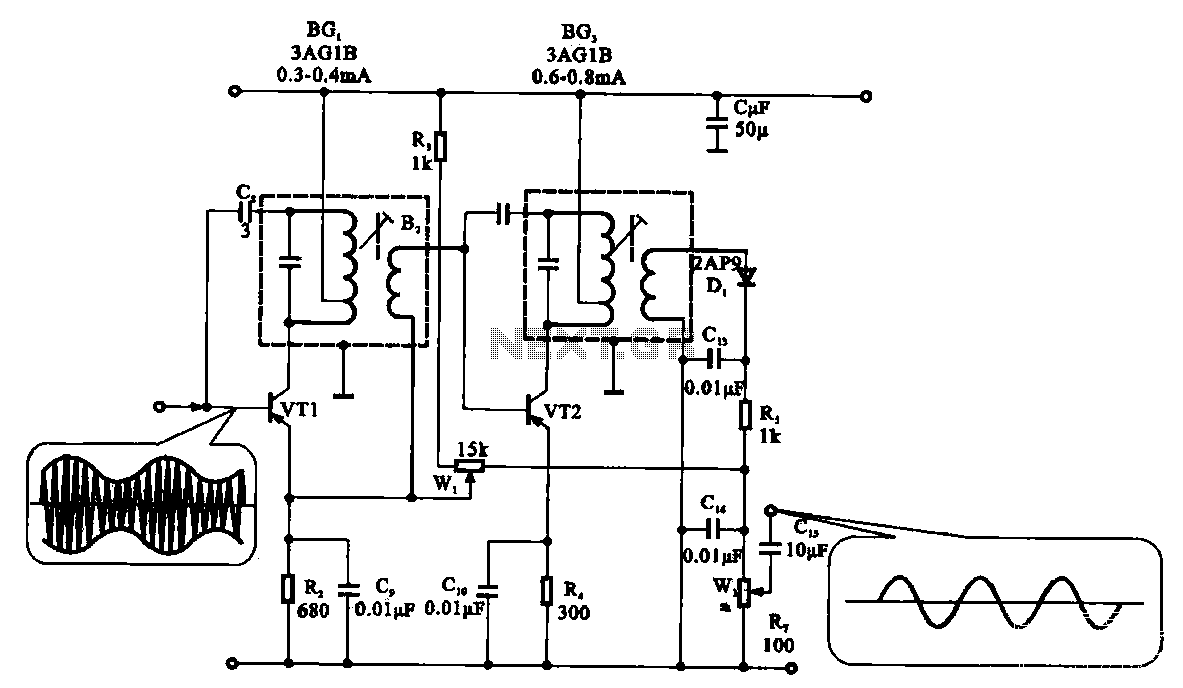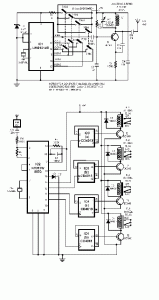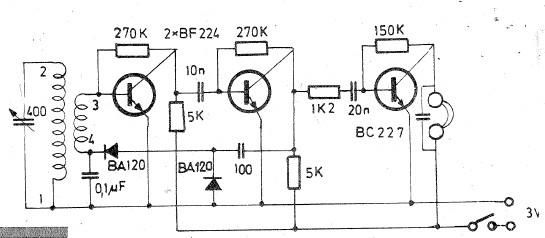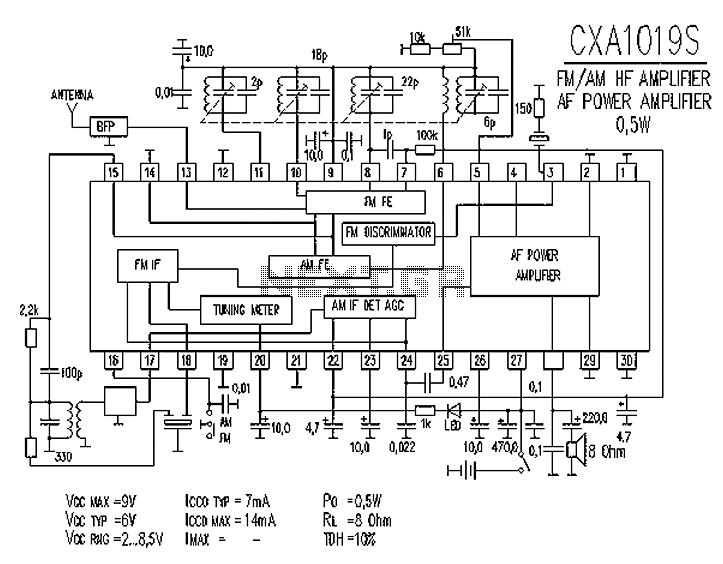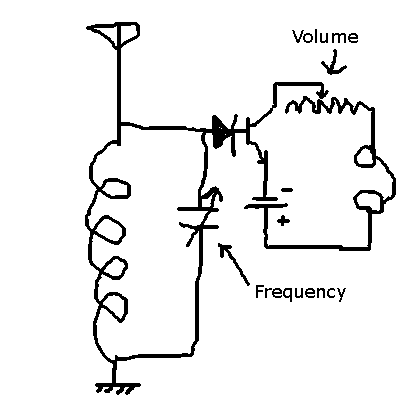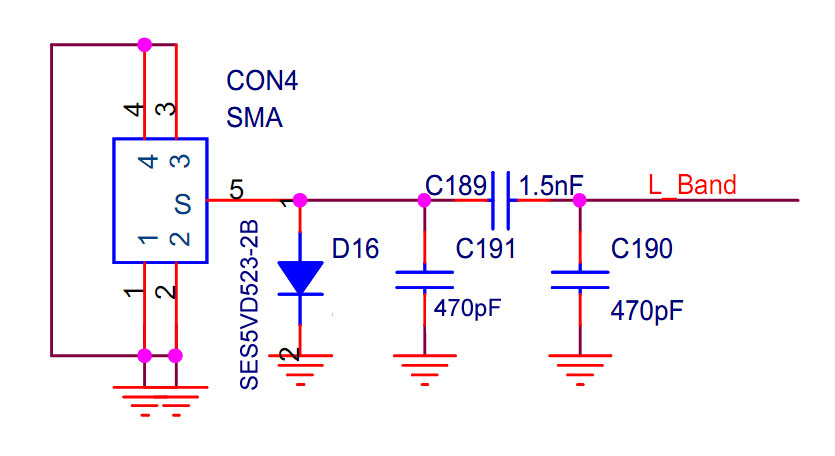
Radio Hat

The Radio Hat was a portable radio integrated into a pith helmet, capable of receiving stations within a 20-mile (32 km) radius. It was launched in early 1949 for $7.95 under the name "Man-from-Mars Radio Hat." A successful publicity campaign led to its availability in stores across the United States. Manufactured by the American Merri-Lei Corporation of Brooklyn, N.Y., the company was known for producing party hats, noise makers, and other novelty items. Founded by Victor Hoeflich, who invented a machine for making paper Hawaiian leis while still in high school (1914), the company shipped millions of leis to Hawaii annually by 1949. Hoeflich, an inventor and gadgeteer, continued to develop machinery for producing paper novelty items. Although battery-operated portable radios had been available for years, Hoeflich aimed to achieve success through innovative packaging and marketing. At the time, transistors were newly invented but still too costly for consumer products; thus, the Radio Hat utilized existing vacuum tube technology, which was prominently featured in its design along with a loop antenna and tuning knob. The hat was offered in eight colors: Lipstick Red, Tangerine, Flamingo, Canary Yellow, Chartreuse, Blush Pink, Rose Pink, and Tan. In March 1949, Hoeflich held a press conference to unveil the "Man from Mars Radio Hat," showcasing teenagers modeling the hats for media coverage. This event generated extensive press, with photos and articles appearing in newspapers nationwide. The Radio Hat also gained attention in various magazines, including do-it-yourself publications like Popular Mechanics and Popular Science, as well as general-interest magazines such as Life and Time. The product was available in department stores and through mail order, with promotional sales at a Van Nuys, California service station chain for customers purchasing gasoline. However, the extensive publicity did not translate into sustained sales, and advertisements ceased in early 1950. In a 1956 interview, Hoeflich noted that orders for the hat continued to arrive even after production had ended. Hugo Gernsback, the editor of Radio-Electronics, was impressed with the Radio Hat, featuring a two-page article in the June 1949 issue that included details on its circuitry and construction, alongside a cover photo of a 15-year-old Hope Lange wearing the Lipstick Red version. Lange later became an acclaimed actress, nominated for an Academy Award for her role in the film "Peyton Place." During this era, radios typically operated on AC mains, using vacuum tubes with a 6 or 12-volt filament supply for heating the cathode and a 100 to 300-volt anode (B+) supply. Advances in World War II for mobile radios led to the creation of inexpensive low-power vacuum tubes. The Radio Hat utilized an external battery pack supplying 1.5 volts for the filaments and a 22.5-volt B+ supply, making it safer for use in a hat, particularly since the full plate voltage was dropped across the earphone. This method was common in many simple radios, which sometimes had high voltages present across the head or earphones. The battery pack was capable of powering the radio for up to 20 hours, and the device received the AM broadcast band (540 kHz to 1600 kHz), with tuning achieved via a knob located between the two vacuum tubes.
The Radio Hat's design incorporates a compact vacuum tube radio circuit, which is a significant engineering feat for its time. The key components include two vacuum tubes: one functioning as the radio frequency amplifier and the other as the audio amplifier. The radio receives AM signals through a loop antenna, which is effectively integrated into the hat's structure, providing both functionality and aesthetic appeal.
The tuning mechanism consists of a variable resistor connected to a tuning knob, allowing users to adjust the frequency to select different radio stations within the AM band. The circuit is powered by the external battery pack, which is designed to be lightweight and compact, ensuring that the overall weight of the hat remains manageable for the wearer.
Safety was a crucial consideration in the design, as the voltage levels were kept low to prevent any risk of electric shock. The audio output is delivered through an earphone, which is designed to be comfortable for extended wear. The entire assembly is encased within the pith helmet, which not only serves as a protective exterior but also enhances the novelty aspect of the product.
In summary, the Radio Hat represents a unique intersection of novelty and technology, showcasing innovative engineering solutions while providing a distinctive consumer experience.The Radio Hat was a portable radio built into a pith helmet that would bring in stations within a 20 mile (32km) radius. It was introduced in early 1949 for $7. 95 as the "Man-from-Mars Radio Hat. " [1] Thanks to a successful publicity campaign, the Radio Hat was sold at stores from coast to coast in the United States.
The Radio Hat was manufactured by American Merri-Lei Corporation of Brooklyn N. Y. The company was a leading supplier of party hats, noise makers and other novelty items. Its founder, Victor Hoeflich, had invented a machine to make paper Hawaiian leis while still in high-school (1914), and by 1949 the company shipped millions of leis to Hawaii each year. An inventor and gadgeteer, [2] [3] [4] Hoeflich continued to develop and even sell machinery that manufactured paper novelty items.
[5] [6] Battery-operated portable radios had been available for many years, but Hoeflich hoped a radio with innovative packaging and a publicity campaign could be a runaway success. The transistor had just been invented, but was still an expensive laboratory curiosity; the first pocket transistor radio was still 5 years away.
This radio would have to use the existing vacuum tube technology and the tubes would be a prominent design feature. The loop antenna and the tuning knob were also visible. The hat was available in eight colors: Lipstick Red, Tangerine, Flamingo, Canary Yellow, Chartreuse, Blush Pink, Rose Pink and Tan.
[7] [8] In March 1949, Victor Hoeflich held a press conference to introduce the "Man from Mars, Radio Hat". Hoeflich knew a picture would tell the story so he had several teenagers modeling the Radio Hats for the reporters and photographers.
Soon pictures and news stories appeared in newspapers coast to coast. [9] [10] The articles typically included a photo of a young lady wearing the hat and a six-paragraph story. The Radio Hat also received widespread coverage in magazines. This included do-it-yourself magazines such as Popular Mechanics, [11] Popular Science, [12] Mechanix Illustrated, [13] and Radio-Electronics.
There was also coverage in general-audience magazines such as Life, Time, [14] Newsweek, and The New Yorker. [6] The Radio Hat was sold in department stores and by mail order. [1] A Van Nuys, California service station chain sold the hats as a promotion item to customers who purchased gasoline.
[15] The massive publicity did not lead to lasting sales. Advertisements for the Radio Hat stopped in early 1950. In a 1956 interview, Hoeflich said the company still got orders for the hat even though it was long out of production. [5] Hugo Gernsback, the Editor of Radio-Electronics, was impressed with the Radio Hat and the June 1949 issue had a two-page article describing the circuitry and construction of the radio.
The cover photograph shows a 15-year-old Hope Lange wearing a Lipstick Red hat. [8] She went on to become an award winning stage, film, and television actress. She was nominated for the 1957 Academy Award for Best Supporting Actress for her role as Selena Cross in the film Peyton Place. [16] [17] Radios at this time usually were powered by the AC mains. They used vacuum tubes that had a 6 or 12 volt filament supply that heated the cathode; and a 100 to 300 volt anode (or B+) supply.
The technology advances in World War II for mobile radios produced inexpensive low power vacuum tubes. The Radio Hat had an external battery pack that provided 1. 5 volts for the filaments and the 22. 5 volt B+ supply. These were much safer voltages for use in a hat, especially since the full plate voltage is dropped across the earphone.
This technique was commonly used in many simple radios, some having ninety or more volts present across the head or earphones. The battery pack would power the radio for up to 20 hours. The radio received the AM broadcast band (540kHz to 1600kHz) and was tuned by a knob between the two tubes.
(Table top or console radio r 🔗 External reference
The Radio Hat's design incorporates a compact vacuum tube radio circuit, which is a significant engineering feat for its time. The key components include two vacuum tubes: one functioning as the radio frequency amplifier and the other as the audio amplifier. The radio receives AM signals through a loop antenna, which is effectively integrated into the hat's structure, providing both functionality and aesthetic appeal.
The tuning mechanism consists of a variable resistor connected to a tuning knob, allowing users to adjust the frequency to select different radio stations within the AM band. The circuit is powered by the external battery pack, which is designed to be lightweight and compact, ensuring that the overall weight of the hat remains manageable for the wearer.
Safety was a crucial consideration in the design, as the voltage levels were kept low to prevent any risk of electric shock. The audio output is delivered through an earphone, which is designed to be comfortable for extended wear. The entire assembly is encased within the pith helmet, which not only serves as a protective exterior but also enhances the novelty aspect of the product.
In summary, the Radio Hat represents a unique intersection of novelty and technology, showcasing innovative engineering solutions while providing a distinctive consumer experience.The Radio Hat was a portable radio built into a pith helmet that would bring in stations within a 20 mile (32km) radius. It was introduced in early 1949 for $7. 95 as the "Man-from-Mars Radio Hat. " [1] Thanks to a successful publicity campaign, the Radio Hat was sold at stores from coast to coast in the United States.
The Radio Hat was manufactured by American Merri-Lei Corporation of Brooklyn N. Y. The company was a leading supplier of party hats, noise makers and other novelty items. Its founder, Victor Hoeflich, had invented a machine to make paper Hawaiian leis while still in high-school (1914), and by 1949 the company shipped millions of leis to Hawaii each year. An inventor and gadgeteer, [2] [3] [4] Hoeflich continued to develop and even sell machinery that manufactured paper novelty items.
[5] [6] Battery-operated portable radios had been available for many years, but Hoeflich hoped a radio with innovative packaging and a publicity campaign could be a runaway success. The transistor had just been invented, but was still an expensive laboratory curiosity; the first pocket transistor radio was still 5 years away.
This radio would have to use the existing vacuum tube technology and the tubes would be a prominent design feature. The loop antenna and the tuning knob were also visible. The hat was available in eight colors: Lipstick Red, Tangerine, Flamingo, Canary Yellow, Chartreuse, Blush Pink, Rose Pink and Tan.
[7] [8] In March 1949, Victor Hoeflich held a press conference to introduce the "Man from Mars, Radio Hat". Hoeflich knew a picture would tell the story so he had several teenagers modeling the Radio Hats for the reporters and photographers.
Soon pictures and news stories appeared in newspapers coast to coast. [9] [10] The articles typically included a photo of a young lady wearing the hat and a six-paragraph story. The Radio Hat also received widespread coverage in magazines. This included do-it-yourself magazines such as Popular Mechanics, [11] Popular Science, [12] Mechanix Illustrated, [13] and Radio-Electronics.
There was also coverage in general-audience magazines such as Life, Time, [14] Newsweek, and The New Yorker. [6] The Radio Hat was sold in department stores and by mail order. [1] A Van Nuys, California service station chain sold the hats as a promotion item to customers who purchased gasoline.
[15] The massive publicity did not lead to lasting sales. Advertisements for the Radio Hat stopped in early 1950. In a 1956 interview, Hoeflich said the company still got orders for the hat even though it was long out of production. [5] Hugo Gernsback, the Editor of Radio-Electronics, was impressed with the Radio Hat and the June 1949 issue had a two-page article describing the circuitry and construction of the radio.
The cover photograph shows a 15-year-old Hope Lange wearing a Lipstick Red hat. [8] She went on to become an award winning stage, film, and television actress. She was nominated for the 1957 Academy Award for Best Supporting Actress for her role as Selena Cross in the film Peyton Place. [16] [17] Radios at this time usually were powered by the AC mains. They used vacuum tubes that had a 6 or 12 volt filament supply that heated the cathode; and a 100 to 300 volt anode (or B+) supply.
The technology advances in World War II for mobile radios produced inexpensive low power vacuum tubes. The Radio Hat had an external battery pack that provided 1. 5 volts for the filaments and the 22. 5 volt B+ supply. These were much safer voltages for use in a hat, especially since the full plate voltage is dropped across the earphone.
This technique was commonly used in many simple radios, some having ninety or more volts present across the head or earphones. The battery pack would power the radio for up to 20 hours. The radio received the AM broadcast band (540kHz to 1600kHz) and was tuned by a knob between the two tubes.
(Table top or console radio r 🔗 External reference
Warning: include(partials/cookie-banner.php): Failed to open stream: Permission denied in /var/www/html/nextgr/view-circuit.php on line 713
Warning: include(): Failed opening 'partials/cookie-banner.php' for inclusion (include_path='.:/usr/share/php') in /var/www/html/nextgr/view-circuit.php on line 713
